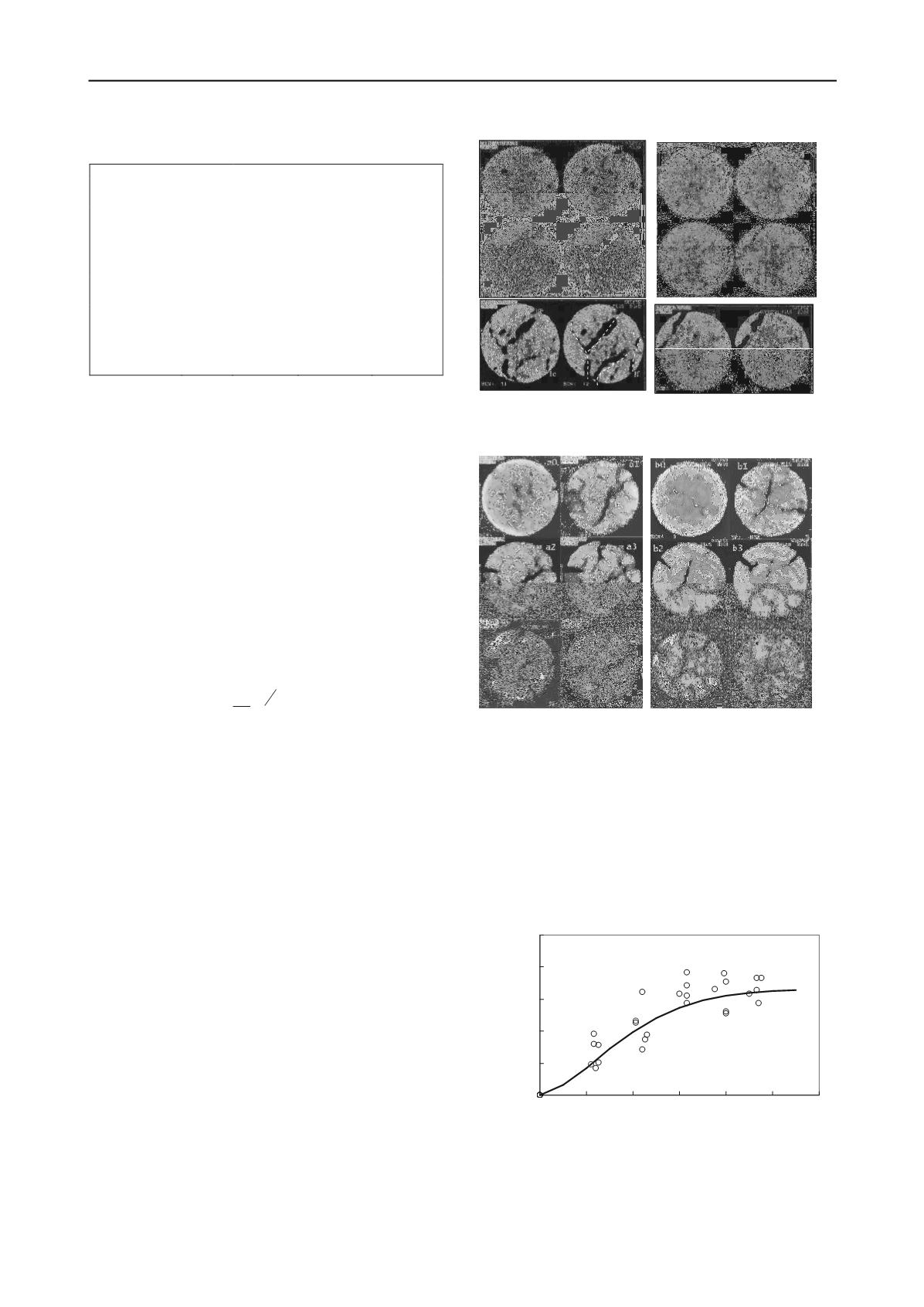
212
Proceedings of the 18
th
International Conference on Soil Mechanics and Geotechnical Engineering, Paris 2013
Proceedings of the 18
th
International Conference on Soil Mechanics and Geotechnical Engineering, Paris 2013
0. 0
0. 3
0. 6
0. 9
1. 2
1. 5
0. 0 0. 2 0. 4 0. 6 0. 8 1. 0 1. 2
ε
V
D
Table 1 Initial conditions and test parameters of sample 2#
Test parameters
Scanning
sequence
Deviator
stress / kPa
Deviator
strain / %
Initial conditions
a
0
0.00
Dry density
ρ
d
/(g/cm
3
)
1.68
b
153
0.95
Water content
w / % 22.1
c
302
3.30
Void ratio
e
0.63
d
283
5.38
Matric suction
s / kPa
100
e
238
8.19
Net cell
pressure
p / kPa
50
f
211
11.24
development of structure damage (which is from fissure
development to several crack connection). 3) Both suction and
cell pressure affect damage evolution. The higher the cell
pressure or suction is, the lower the damage degree of sample
will be. 4) The formation of fracture plane of undisturbed soil
has several characteristics as follows: a) Inevitability:
preexisting fissures, or weakness planes or large cavity, which
are the weak areas of samples, easily extend to fracture plane
(dash line
in figure 2). b) Randomness: there are no signs
before fracture plane forming, however, fissure occurs with
shear and develops to fracture plane (dash line
in figure 2). c)
Correlation: new fracture plane grows due to other fracture
planes (dash lines
and
④
in figure 2)
Taking the mean value of CT data of undisturbed samples
as the base value, a damage variable
1
D
can be defined as the
relative difference of base value and the mean value of CT data
in the process of tests. Damage evolution equation can be
obtained through analysis on test date:
0
1
0
exp(
) 1
atm
s
P
s
p
D D
p
(1)
where
D
0
is the initial value of damage variable,
s
is
deviator strain,
s
is suction,
p
atm
is atmospheric pressure,
p
and
0
p
are spherical stress and pre-consolidation pressure,
respectively.
Equation (1) can reflect the influence of deviator stress, pre-
consolidation pressure, suction and initial damage degree on
expansive soil in the process of shear. It is convenient to use
equation (1) in constitutive relationship because of its simple
style and a few of parameters involved.
3.2
Characteristics of structure damage evolution of
remolded expansive soil in the process of wet-dry circles
Twelve wet-dry cycle tests of remolded expansive soils were
carried out. Each sample went through 5 wet-dry circles. The
sizes and the scanning cross-sections of the samples were as
same as in section 3.1. However, the scanning pictures were
marked as a0~a5 and b0~b5, successively, were corresponding
to the cross section of 0.3H and 0.7H from the top of the
simples, respectively. The picture marked as a0 and b0
associated with the initial state of the specimen. A total of 66
CT images were obtained. Let H and SD denote the mean value
and the standard deviation of CT data of a scanning section,
respectively, the results of the tests show that H decrease and
Figure 2. Scanning images during triaxial shear test
of sample 2# of intact expansive soil.
Figure 3. Scanning images through 5 times of wet-dry
circles of sample 5# of remolded expansive soil
The damage values related to various volumetric strains in
wet-dry circle tests are show in figure 4. Through curve-fitting,
the damage evolution equation upon the wet-dry circle test is:
2
exp( )
v
D A
(2)
Where
A
is a soil parameter, and
v
is volumetric strain. It is
obviously that the damage evolution equation is in good
agreement with the experiments.
SD augment as the times of wet-dry circles increase. The
images show that the cracks initiate and extend continuously. At
last, the crannies becomes connectivity each other as shown in
figure 3.
Taking the CT data corresponding to the initial state of
specimen as the base value, a damage variable
2
D
can be
defined as the relative difference of base value and the value of
CT data in the process of wet-dry circles tests.
Figure 4. The damage values vs. volumetric strains of samples in the
process of wet-dry circles test
①
②
③
④


